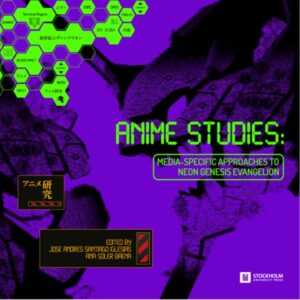
Different forms of selfhood enacted in the TV and filmic endings of the anime Evangelion can be revealed by building on Donald Crafton’s typology of performance of/in animation of “embodied acting” and “figurative acting.” Embodied acting is “introverted,” and tends towards the production of modernistic, anthropomorphic individuals that appear to provide a sense of depth in their enactment of emotion through their individualized movement. Figurative acting, which repeats similar codes in varying combinations for different characters, is “extroverted,” as the codes appear shared between various characters, forcing a recognition of the surface location of the code for that emotion, on not in the character. As such, the interrelation and tension between these forms of performing selfhood play out in Evangelion: objects of human creation, the Eva-units, boldly display their agency as they exhibit shocking performances of embodied acting, the Eva-units appearing with the same autonomy as human individuals; on the other hand, humans are broken into parts, their psyche examined in pieces as they delve into their minds to find only more pieces of other characters, an interrogation of the constitutive codes of figurative acting—the examination of objecthood that we see in the TV ending. However, the filmic ending departs from the optimistic embrace of objecthood and presents the harrowing vision of ecological catastrophe as it explores different individualisms, taking them to their world-ending climax.
Original English version published in Anime Studies: Media-Specific Approaches to Neon Genesis Evangelion. Ed. José Andrés Santiago Iglesias and Ana Soler Baena (Stockholm: Stockholm University Press, 2021), 135-180.

